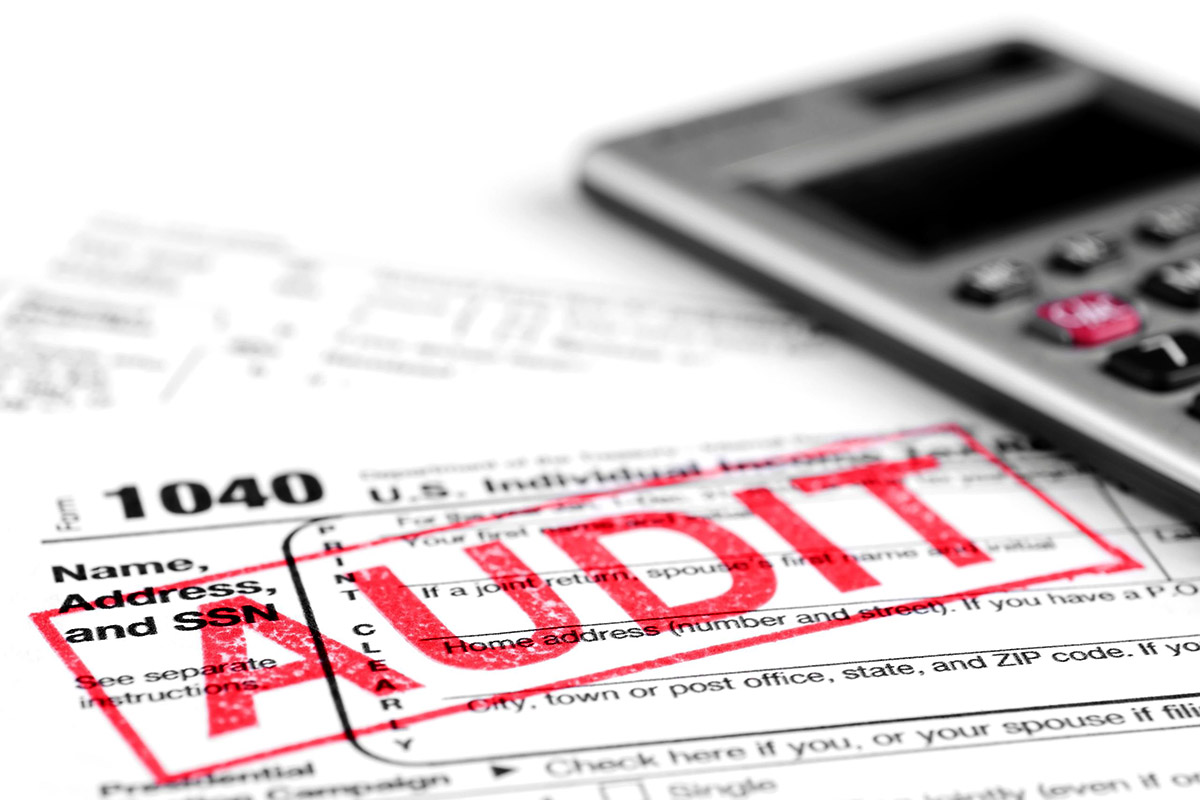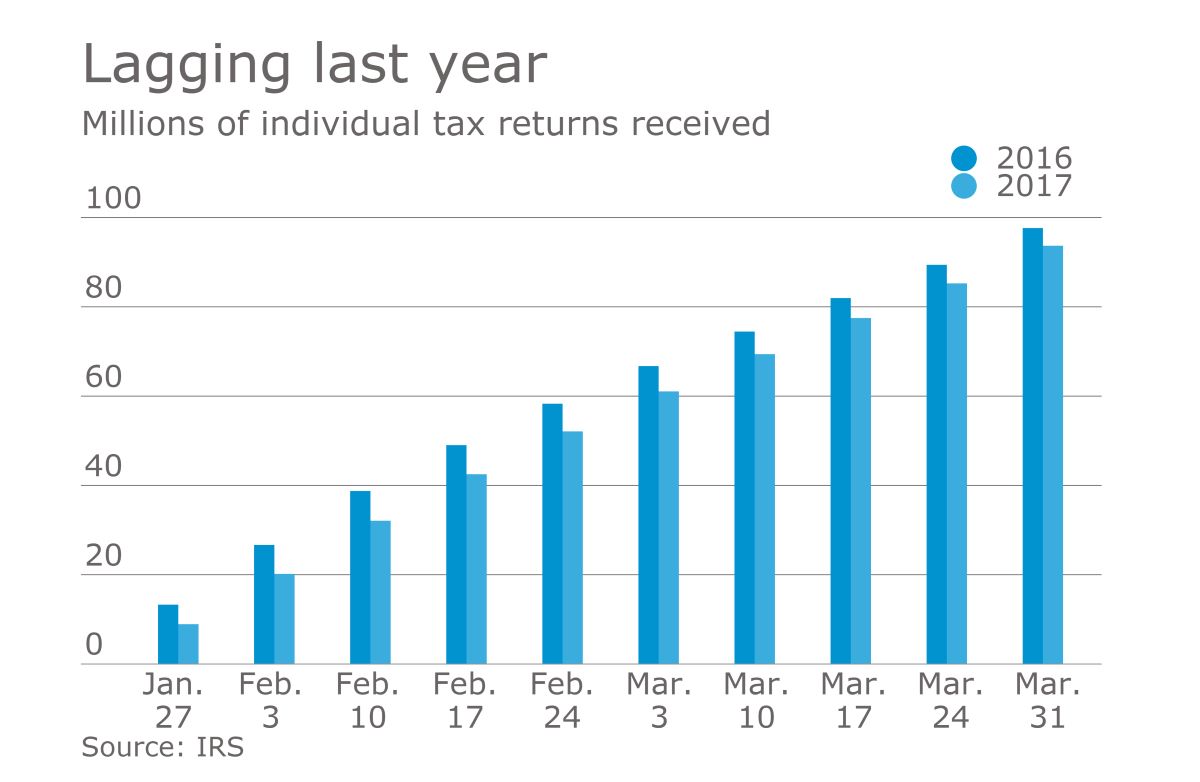

Finance
What Happens If IRS Rejects A Tax Return?
Published: October 29, 2023
Find out what happens if the IRS rejects a tax return in this informative finance article. Learn how to handle the situation and navigate the tax filing process.
(Many of the links in this article redirect to a specific reviewed product. Your purchase of these products through affiliate links helps to generate commission for LiveWell, at no extra cost. Learn more)
Table of Contents
Introduction:
Submitting a tax return to the Internal Revenue Service (IRS) is an important annual ritual for many individuals and businesses. It is a comprehensive document that outlines your income, deductions, and tax liability for a particular tax year. However, what happens if the IRS rejects your tax return?
Receiving a rejection notice from the IRS can be disheartening and worrisome. It may seem like a daunting task to correct the errors and resubmit your tax return. However, understanding the reasons behind an IRS rejection and knowing how to handle it can help alleviate stress and ensure compliance with tax laws.
In this article, we will explore the common reasons for an IRS rejection, the types of rejected tax returns, and the potential consequences of a rejected return. We will also discuss the steps you can take to correct and resubmit your tax return, as well as provide tips on how to avoid future rejections.
Reasons for IRS Rejection:
There are several reasons why the IRS may reject a tax return. It is important to understand these reasons to ensure that your tax return is accurate and compliant. Here are some of the most common reasons for an IRS rejection:
1. Incorrect or Missing Information: One of the primary reasons for an IRS rejection is when the tax return contains incorrect or missing information. This can include errors in your personal information (such as your name or Social Security number), incorrect calculations, or missing forms or schedules. It is crucial to review your tax return carefully before submitting it to ensure that all information is accurate and complete.
2. Math Errors: Simple math mistakes can also lead to an IRS rejection. Adding or subtracting incorrectly, entering wrong numbers, or miscalculating deductions or credits can result in an inaccurate tax return. Always double-check your calculations and consider using tax software or a professional tax preparer to minimize the risk of math errors.
3. Filing Status Errors: Choosing the incorrect filing status on your tax return can trigger a rejection. The IRS offers several filing statuses, including single, married filing jointly, married filing separately, head of household, and qualifying widow(er) with dependent child. Ensure that you select the appropriate filing status based on your circumstances to avoid rejection.
4. Income Discrepancies: The IRS receives copies of Forms W-2, 1099, and other income-related documents from employers, financial institutions, and other sources. If there is a discrepancy between the income reported on your tax return and the information provided by these parties, your tax return may be rejected. Carefully review all income-related documents and ensure that you accurately report your income.
5. Duplicate Filing: Submitting multiple tax returns for the same tax year can result in a rejection. Some individuals may accidentally file their tax returns more than once, either electronically or by mail. The IRS system detects duplicate returns and rejects them to prevent double processing and potential fraud.
6. Signature Requirement: For an electronic tax return, a valid electronic signature is required. If the electronic signature is missing or does not meet the IRS requirements, your tax return may be rejected. The same applies to paper returns where an original signature is required. Ensure that you sign your tax return properly to avoid rejection.
It is essential to carefully review your tax return and cross-check all information before submitting it to the IRS. Taking the time to ensure accuracy and completeness can help mitigate the risk of rejection and the resulting hassles.
Common Errors Leading to Rejection:
While there are various reasons for an IRS rejection, certain common errors tend to surface frequently. These errors can easily be avoided by understanding the requirements and following the guidelines provided by the IRS. Here are some common errors that can lead to a rejection of your tax return:
1. Incorrect Social Security Numbers: Providing incorrect or incomplete Social Security numbers for yourself, your spouse, or your dependents can result in a rejection. It is crucial to verify that all Social Security numbers are accurately entered on the tax return to avoid any issues.
2. Missed Forms or Schedules: Many taxpayers fail to include all necessary forms and schedules with their tax return, leading to a rejection. Depending on your circumstances, you may need to include additional forms or schedules to report specific income, deductions, or credits. Ensure that you review the instructions carefully and include all required documents before submitting your tax return.
3. Forgotten Signatures: Forgetting to sign your tax return, whether it is an electronic signature for e-filing or a handwritten signature on a paper return, will result in rejection. The IRS requires valid signatures to authenticate the tax return. Double-check that you have signed your return in the appropriate places to avoid any issues.
4. Incorrect Filing Status: Choosing the wrong filing status can lead to an IRS rejection. Each filing status has specific requirements and determines the tax rates and deductions you are eligible for. Understand the criteria for each filing status and select the one that accurately reflects your situation.
5. Mathematical Errors: Simple math mistakes can occur when calculating your taxable income, deductions, or credits. These errors may lead to discrepancies between your calculations and those made by the IRS. Double-check your calculations and consider using tax software or a professional tax preparer to minimize the risk of mathematical errors.
6. Inconsistent Information: Inconsistencies in the information provided on different parts of the tax return can trigger a rejection. Make sure that the information you enter is consistent throughout the return. For example, the income reported on the main form should match the income reported on any additional schedules or forms.
It is crucial to carefully review your tax return for these common errors before submitting it to the IRS. By taking the time to double-check your information and ensure accuracy, you can prevent unnecessary rejections and potential delays in processing your return.
Types of Rejected Tax Returns:
When the IRS rejects a tax return, there are different types of rejections that can occur. Understanding these types can help you identify the specific issues and take the appropriate steps to remedy them. Here are the common types of rejected tax returns:
1. Reject with Error Code: In some cases, the IRS will provide an error code that indicates the specific issue leading to the rejection. These error codes can range from simple errors such as incorrect Social Security numbers to more complex issues like missing forms or incorrect calculations. Understanding the error code can provide insight into the problem and guide you in resolving it.
2. Reject without Error Code: In other instances, the IRS may reject a tax return without providing an error code. This can happen if there are multiple errors or if the rejection falls under a general category that does not have a specific code assigned to it. In such cases, you will need to carefully review your tax return and identify any possible errors based on the guidelines provided by the IRS.
3. Duplicate Filing Rejection: When you accidentally submit multiple tax returns for the same tax year, the IRS will reject all duplicate filings. The rejection notice will specify that the return is a duplicate submission. To resolve this issue, you should confirm the correct version of your tax return and submit it again while ensuring that there are no duplicate filings.
4. Signature-related Rejections: If your tax return lacks a valid signature or does not meet the signature requirements set by the IRS, it will be rejected. This can occur for both e-filed returns and paper returns. Make sure to follow the IRS guidelines for electronic signatures or sign the paper return properly to avoid this type of rejection.
5. IRS Mismatch Rejection: If the information you provide on your tax return does not match the data reported by employers, financial institutions, or other sources to the IRS, your return may be rejected. This can happen if there is a discrepancy in the reported income, tax withholdings, or other related information. Carefully review your tax return and cross-check it with the documents you received to ensure consistency and accuracy.
Regardless of the type of rejection, it is crucial to address the issues promptly and take corrective action. This will help ensure that your tax return is accurate, compliant, and successfully processed by the IRS.
Consequences of a Rejected Tax Return:
When your tax return is rejected by the IRS, it can have several consequences that can affect your financial and legal standing. It is important to understand these consequences to take appropriate action and avoid any further complications. Here are some potential consequences of a rejected tax return:
1. Delay in Refund: If you are due a refund, a rejected tax return can delay the processing of your refund. The IRS will require you to correct the errors on your return and resubmit it. The processing time for a corrected return can take longer than the standard processing time for original returns. This delay can affect your financial plans if you were relying on the refund for immediate expenses or investments.
2. Accruing Penalties and Interest: If your rejected tax return results in a late filing or payment, you may be subject to penalties and interest charges. The IRS imposes penalties for failing to file a tax return or pay the taxes owed by the deadline. These penalties can accumulate with each passing month, increasing the overall amount owed to the IRS. It is crucial to address the rejection promptly to avoid incurring unnecessary penalties and interest.
3. Missed Opportunities for Deductions and Credits: A rejected tax return may also result in missed opportunities to claim deductions and credits. If you discover errors or omissions on your original return, you may not be able to take advantage of certain deductions or credits that could reduce your tax liability. Correcting the errors and resubmitting your return allows you to claim these benefits and potentially lower your tax bill.
4. Increased Likelihood of an Audit: Although a rejected tax return does not automatically trigger an audit, it may increase the likelihood of being selected for one. The IRS closely scrutinizes tax returns with errors or inconsistencies, as they can indicate potential inaccuracies or attempts to underreport income. By promptly addressing the rejection and correcting any errors, you can minimize the risk of an audit.
5. Potential Legal Consequences: In cases where the errors on your tax return were deliberate or fraudulent, the consequences can be severe. Willfully providing false information or intentionally underreporting income can result in criminal charges, fines, and potential imprisonment. It is essential to always file an accurate and honest tax return to avoid these legal ramifications.
Facing a rejected tax return can be stressful, but it is essential to address the issues promptly and take corrective action. By correcting the errors, resubmitting your return, and maintaining compliance with tax laws, you can minimize the negative consequences and ensure a smooth interaction with the IRS.
Steps to Correct and Resubmit a Rejected Return:
Receiving a rejection notice from the IRS does not mean the end of the road. In most cases, you will have the opportunity to correct the errors and resubmit your tax return. Follow these steps to address a rejected tax return:
1. Carefully Review the Rejection Notice: Start by thoroughly reviewing the rejection notice provided by the IRS. The notice will typically outline the reasons for the rejection and may provide specific instructions on how to correct the errors. Pay close attention to any error codes or references that can guide you in resolving the issues.
2. Understand the Rejection Reason: Identify the specific errors or omissions that led to the rejection. Cross-reference the rejection notice with your original tax return to pinpoint the areas that need correction. Understanding the rejection reason is crucial for accurately rectifying the issues.
3. Gather Supporting Documentation: Collect all the necessary supporting documentation to address the rejection. This may include updated forms or schedules, corrected calculations, or additional documentation to support your deductions or credits. Ensure that you have all the necessary paperwork before proceeding.
4. Make the Necessary Corrections: With the rejection reasons and supporting documentation in mind, make the appropriate corrections to your tax return. Update any incorrect or missing information, recalculate any figures, and attach any additional forms or schedules as required. Take your time to ensure accuracy.
5. Resubmit Your Tax Return: Once you have made the necessary corrections and reviewed your tax return for accuracy, you can resubmit it to the IRS. Follow the instructions provided in the rejection notice to determine the appropriate method of resubmission. If you originally e-filed your return, you may need to submit a corrected electronic return. If you filed a paper return, you may need to send in a new, corrected return by mail.
6. Track the Status of Your Return: After resubmitting your corrected tax return, you can track its status to ensure it is successfully processed by the IRS. Use online tools provided by the IRS or contact their helpline to check the progress of your return. This will help you stay informed and address any further issues promptly, if necessary.
7. Take Preventive Measures for the Future: Once you have successfully corrected and resubmitted your return, take proactive steps to prevent future rejections. Maintain accurate records, use tax software or professional assistance, and review your tax return carefully before submission. By following these preventive measures, you can reduce the likelihood of a rejected return in subsequent tax years.
Remember, addressing a rejected tax return promptly and accurately is crucial for avoiding delays, penalties, or further complications. By following these steps and maintaining compliance with tax laws, you can rectify the errors and ensure a successful interaction with the IRS.
How to Avoid Future Rejections:
Dealing with a rejected tax return can be a hassle and may result in delays, penalties, and unnecessary stress. To prevent future rejections, it is important to take proactive steps and ensure that your tax return is accurate and compliant. Here are some tips to help you avoid future rejections:
1. Keep Accurate and Organized Records: Maintaining accurate and organized records throughout the year is crucial for preparing an error-free tax return. Keep track of income documents such as W-2s and 1099s, as well as expense receipts, donation records, and any other relevant financial documents. Having complete and organized records will help you report accurate information on your tax return.
2. Use Tax Software or Professional Assistance: Consider using reputable tax software or seeking professional assistance when preparing your tax return. Tax software can help guide you through the process, flag potential errors, and perform necessary calculations automatically. Alternatively, working with a qualified tax professional can provide expert guidance and ensure accuracy.
3. Double-Check Information: Before submitting your tax return, double-check all the information you have entered. Verify your personal details, including your Social Security number, mailing address, and filing status. Review income figures, deductions, and credits to ensure accuracy. Taking the time to double-check can help catch any errors or omissions before submitting your return.
4. Follow IRS Instructions: Familiarize yourself with the IRS guidelines, forms, and schedules relevant to your tax situation. Take the time to read instructions carefully and follow them when preparing your tax return. The IRS provides detailed instructions for each form or schedule, including the specific requirements for reporting different types of income and deductions.
5. E-file Instead of Mail: Electronic filing (e-filing) is generally more accurate and efficient compared to mailing a paper return. E-filing reduces the risk of errors caused by handwritten forms, and it also enables you to receive quicker confirmation of your submission. Additionally, the IRS software automatically checks for common errors and prompts you to correct them before submission.
6. Stay Up-to-Date with Tax Law Changes: Tax laws can change from year to year, and new regulations may affect your tax obligations and reporting requirements. Stay informed by regularly reviewing updates from the IRS and other reliable sources. Understanding the latest tax law changes will help you ensure compliance and avoid potential rejections.
7. Seek Professional Advice for Complex Situations: If you have a complex tax situation, such as self-employment income, rental properties, or investment gains, consider seeking professional advice. Tax professionals specialize in navigating intricate tax scenarios and can help ensure that your return is accurate and compliant with the specific rules and regulations that apply to your situation.
By following these tips, you can minimize the risk of future rejections and create a smoother tax filing experience. Remember, accuracy, attention to detail, and staying informed are key to avoiding unnecessary headaches and ensuring a successful tax return submission.
Conclusion:
A rejected tax return can be a frustrating experience, but it is not the end of the world. Understanding the reasons for rejection, common errors to avoid, and the necessary steps to correct and resubmit your tax return can help you navigate the process smoothly and efficiently.
By taking the time to carefully review your tax return, double-checking for accuracy, and following the guidelines provided by the IRS, you can minimize the chances of rejection. Keeping accurate records, using tax software or professional assistance, and staying up-to-date with tax laws are key practices to avoid future rejections.
In the event that your tax return is rejected, it is important not to panic. Instead, carefully review the rejection notice, address the specific issues causing the rejection, gather the necessary documentation, and make the appropriate corrections. Resubmit your corrected tax return promptly and track its progress to ensure successful processing.
By avoiding future rejections, you can prevent delays in obtaining your refund, minimize the risk of penalties and interest charges, and maintain compliance with tax laws. Taking the necessary steps to ensure an accurate and compliant tax return will not only save you time and frustration but also help you maintain a positive relationship with the IRS.
Remember, if you find yourself struggling with the complexities of tax filing, it is always wise to seek professional advice. Tax professionals can provide expert guidance and ensure that your tax return meets all requirements, reducing the likelihood of a rejection.
In conclusion, by understanding the causes of IRS rejections, avoiding common errors, and following the appropriate steps to correct and resubmit rejected returns, you can navigate the tax filing process effectively and with confidence. With proper attention to detail and compliance, you can achieve seamless tax return submissions and maintain financial peace of mind.














